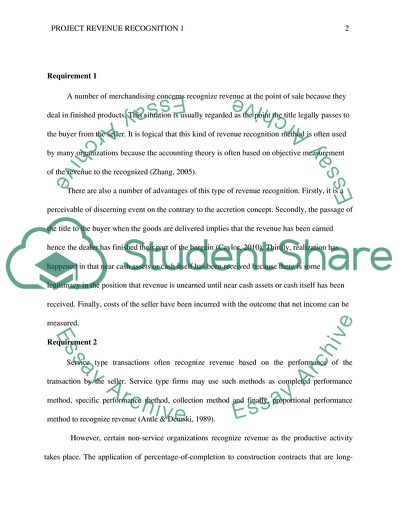Project Revenue Recognition 1 Essay Example | Topics and Well Written Essays - 500 words. https://studentshare.org/finance-accounting/1875877-project-revenue-recognition-1
Project Revenue Recognition 1 Essay Example | Topics and Well Written Essays - 500 Words. https://studentshare.org/finance-accounting/1875877-project-revenue-recognition-1.


